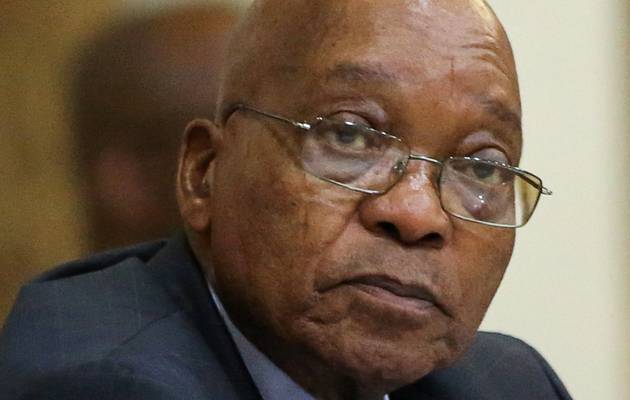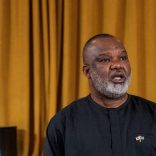M23 rebels reject accusations of gold theft from eastern Congo mine
South Africa – President Zuma’s future: 5 big questions

File photo
Jacob Zuma might be at his weakest point since becoming president in 2009.
His sweeping cabinet changes, including the firing of Finance Minister Pravin Gordhan, have precipitated a political crisis to go along with his own scandal-checkered history and the nation’s economic struggles — high unemployment, slow growth and a wide budget deficit.
Following the March 31 dismissal of Gordhan, a favorite of investors who had kept a lid on spending and pledged to cut debt, S&P Global Ratings cut the nation’s credit rating to junk for the first time in 17 years. Opposition parties, civic groups and allies of the ruling African National Congress are demanding that Zuma quit.
He’s not due to step down as party leader until December and as president in 2019.
1. How is Zuma still holding on?
The campaign by opposition parties and business groups to push him out won’t succeed without the backing of a significant portion of the ANC, the nation’s dominant party since the first post-apartheid election in 1994. In the past, the party has closed ranks in the face of opposition moves against its leaders.
2. Are there any cracks in Zuma’s party support?
Yes. Top leaders, including Deputy President Cyril Ramaphosa, have criticised Zuma for firing Gordhan. The South African Communist Party and the Congress of South African Trade Unions, both ANC allies, are calling on Zuma to go.
But the ANC’s top decision-making group, the National Executive Committee, has backed Zuma so far because many of its members owe him for their positions. And there’s no sign of the groundswell within the party that would be required to really threaten Zuma’s continued rule.
3. How could he be removed?
While there are clear mechanisms to remove Zuma, it’s no easy task. The NEC, a group of about 100 party leaders, could decide by majority vote to call on Zuma to resign as president. This isn’t unprecedented. The committee forced out then-President Thabo Mbeki in 2008. Parliament could also act.
The speaker, Baleka Mbete, is considering a request from the two biggest opposition parties, the Democratic Alliance and the Economic Freedom Fighters, to call lawmakers back from their Easter recess for a no-confidence vote (Zuma survived four previous such votes) .
If such a motion won support from all opposition members of the 400-seat National Assembly, it would still need 50 of the ANC’s 249 members to win a majority.
DA launches High Court bid to set aside Zuma’s decision to fire Gordhan
Zuma’s opponents are working to persuade disgruntled ANC members, such as those purged in the cabinet reshuffle, to turn against him.
4. Is the worst over for South Africa’s currency?
The political upheaval of the last few months has sent the rand on a wild ride. Before Zuma recalled Gordhan from a series of meetings with investors in London, it was the world’s best-performing currency so far in 2017.
Then it plunged as much as 10 percent in six days. Analysts are split on where it’s headed from here. The bad news is already reflected in the exchange rate, judging by the median forecast of analysts in a Bloomberg survey.
Wayne McCurrie, head of portfolio management at Ashburton Investments, predicted on April 4 that the rand could return to pre-crisis levels should Zuma leave office. Other analysts like Standard Bank Group Ltd.’s Walter de Wet are less sanguine. Options traders are at their most bearish since January 2016, suggesting the decline could be deeper.
5. Are foreign investors fleeing?
Not yet. Yields on government bonds are among the highest for countries that have at least some debt rated investment-grade; the benchmark 10-year bond had an average yield of 8.7 percent in the first quarter. Some investors say yields are rich enough to compensate them for the increased risk.
SA’s economy must change‚ says Gigaba
Offshore investors remained net buyers of South African rand debt throughout the turmoil, with inflows in the week Gordhan was fired the highest since June. While S&P now rates South Africa’s foreign-currency debt BB+, one level below investment-grade, Fitch Ratings and Moody’s still assess its creditworthiness above that threshold.
Downgrades by those rating companies would spark forced selling by investors who track debt indexes. For the country’s local-currency debt, though, ratings are still investment grade, with foreign investors holding about a third of the R1.74 trillion of this type of debt.












Leave a Reply
Be the First to Comment!
You must be logged in to post a comment.
You must be logged in to post a comment.